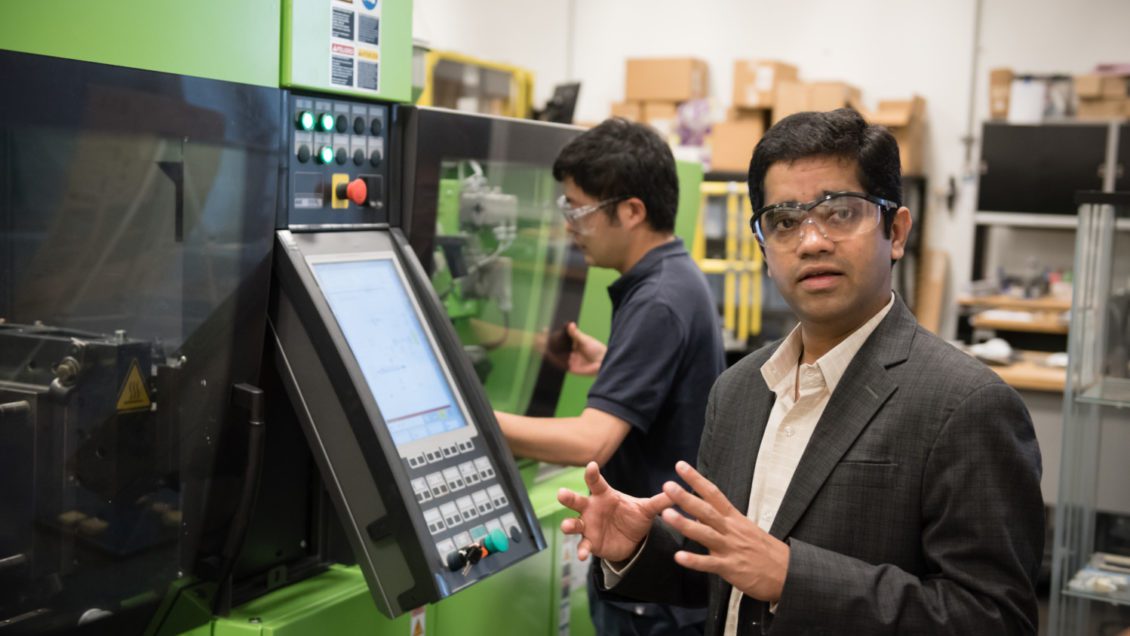Clemson University students and faculty have always known “there’s something in these hills,” and now the rest of the world is starting to understand, too.
Clemson was cited alongside some of the nation’s most elite universities in “10 Innovative Engineering Institutes,” an article in Mechanical Engineering, the flagship magazine of The American Society of Mechanical Engineers.

Among the other universities on the list were the Massachusetts Institute of Technology, Stanford University and Carnegie Mellon University.
“The schools chosen on our list are pushing innovation by exposing engineering students to a global way of thinking, to research opportunities that are looking into the future of technology, and working across disciplines,” wrote the article’s author, Carlos M. Gonzalez.
The article cited several initiatives that are key in making the Clemson experience unique and keeping the pipeline to industry filled with top talent.
They include the ClemsonForward strategic plan, EMAG!NE, RISE living-learning community, Clemson Engineers for Developing Countries, and four innovation campuses.
Those campuses, locations and focus areas are:
- Advanced Materials Center, Anderson, advanced materials and sustainable environment
- Clemson University International Center for Automotive Research (CU-ICAR), Greenville, energy transportation and advanced manufacturing
- Clemson University Biomedical Innovation Campus (CUBEInC) at Prisma Health’s Patewood Medical Campus, Greenville, health innovation (While it’s not mentioned in the magazine article, Clemson also has a strong bioengineering program in partnership with the Medical University of South Carolina in Charleston.)
- Clemson University Restoration Institute, Charleston, energy, big data, sustainable environment
The article also mentioned Clemson’s efforts to bring innovation to emerging tech areas and cited two examples, “fuel-saving carbon-fiber-reinforced thermoplastic composite car doors and tissue regeneration to treat aneurysms and heart valves.”
The car door research is led by Srikanth Pilla, Jenkins Endowed Professor of Automotive Engineering. His group has designed an ultra-lightweight automobile door that is made of carbon-fiber-reinforced thermoplastic composites instead of steel. The idea is to reduce the weight of automobiles so they use less fuel. The research was enabled by a $5.81-million award in 2015 from the U.S. Department of Energy.
COVID-19 isn’t mentioned in the article, but Clemson is continuing to innovate in engineering education while the situation is ongoing. Examples include:
- Fadi Abdeljawad, an assistant professor of mechanical engineering, used a wall in his house as a whiteboard to help keep his students engaged during online classes.

This graphic, provided by Srikanth Pilla, shows the features of the carbon-fiber-reinforced thermoplastic composite door his team has created. - Dissertation defenses are continuing online.
- As part of the Clemson COVID Challenge, students are finding solutions to the current and future pandemics, including a UVC device to decontaminate groceries and a “negative pressure” device designed to protect healthcare providers.
Among those celebrating the Mechanical Engineering article were Atul Kelkar, chair of the Department of Mechanical Engineering, and Zoran Filipi, chair of the Department of Automotive Engineering. Both are Fellows in The American Society of Mechanical Engineers.
Kelkar said the article will help raise Clemson’s international profile. The magazine reaches more than 160,000 engineers in 150 countries, according to its website.
“I was thrilled to learn that Clemson received this wonderful designation,” Kelkar said. “Good news like this travels fast. It will help as we recruit top faculty and students and spread the word in industry about the high-quality graduates we produce.”
Filipi said it’s fitting that the magazine cited the innovation campuses and the composite car doors research.

“Both are examples of innovations that help drive economic growth and position students to succeed in the modern workplace,” Filipi said. “We offer highly relevant, multidisciplinary programs and address pressing needs of industry for impactful research focused on real-world problems. That’s a crucial factor in recruiting corporate headquarters and research-and-development facilities to the state.”
Other universities that made the list were the Georgia Institute of Technology, Princeton University, the University of Michigan, Drexel University, Cornell University and The University of Texas at Austin.
Anand Gramopadhye, dean of Clemson’s College of Engineering, Computing and Applied Sciences, said a rich history of innovation is built into the DNA of the college.
“To thrive, innovation requires an ecosystem that is vibrant and challenging, but also nurturing,” he said. “Innovation needs the right people, appropriate infrastructure, relevant programming and a diversity of stakeholders, ideas and thought. But most importantly, innovation requires the right mindset and leadership at the top.
“This is underscored by the leadership provided by Clemson University President Jim Clements who has been at the forefront of innovation at the national level.
“He is a nationally recognized leader in higher education who serves on the Council on Competitiveness Executive Committee and The Business-Higher Education Forum. He is also past co-chair of the U.S. Department of Education’s National Advisory Council on Innovation and Entrepreneurship, and a past member of the National Innovation Advisory Board.
“Once you create the right environment for entrepreneurs and innovators to thrive, it in turn has a multiplying factor and a transcending effect for innovation, which is clearly reflected in the work of the faculty in our college.”
Read the full Mechanical Engineering article here and watch the video here.
Get in touch and we will connect you with the author or another expert.
Or email us at news@clemson.edu


